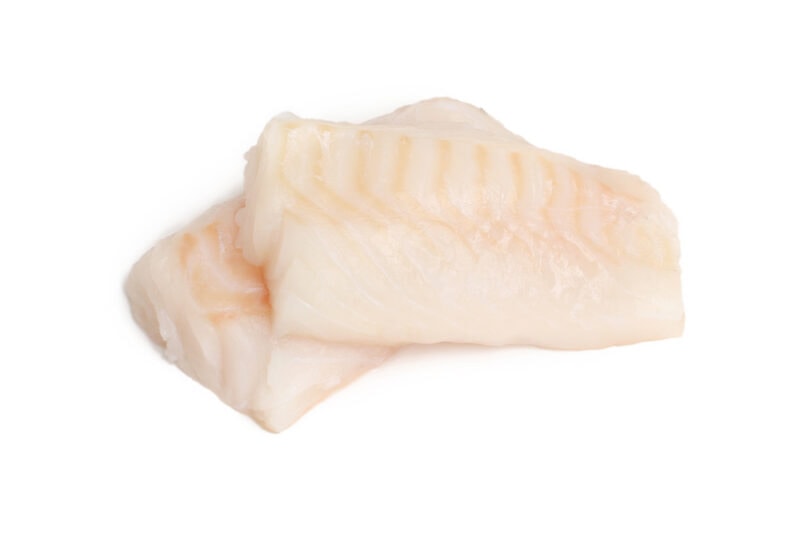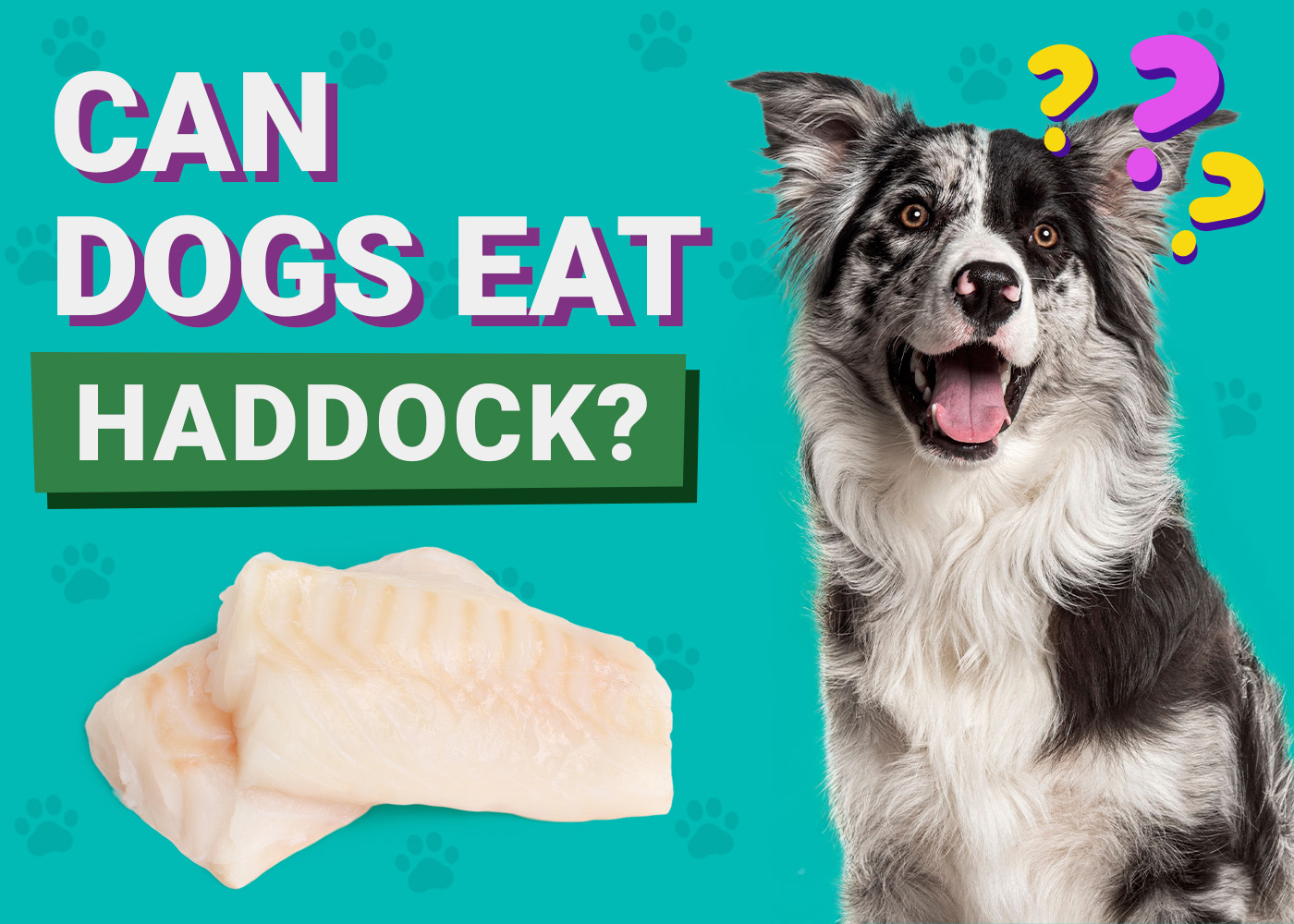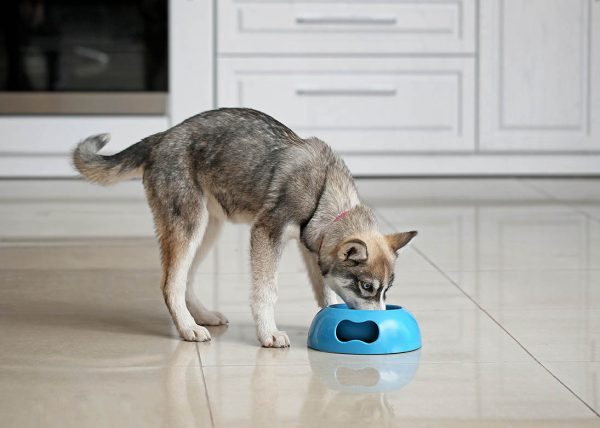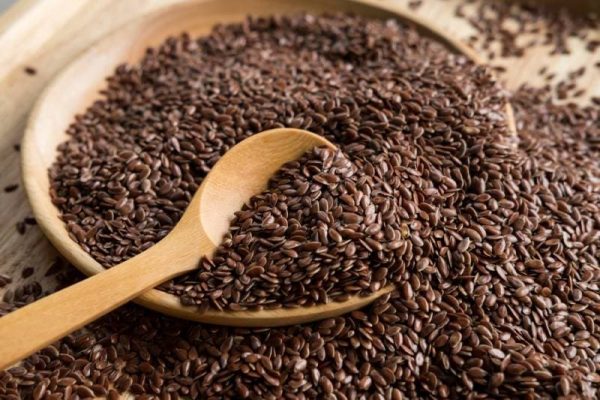In this article
Many dog owners today are looking for healthier food options for their pets, including fish. Most fish are high in protein and other nutrients and are an excellent addition to a dog’s diet. One question you might have is whether haddock, a fast-growing saltwater species, is a healthy fish to feed your dog.
Yes, haddock is a healthy option. Haddock is loaded with protein as well as omega-3 fatty acids and several other nutrients beneficial for your dog. If you’re searching for more facts about haddock and how to feed it to your precious canine, keep reading.

What Are the Health Benefits of Haddock for Your Dog?
Like many species, haddock has a wide range of beneficial nutrients for dogs. That’s one of the main reasons haddock is used in many commercially-made dog foods. Some of the health benefits of feeding haddock to your dog include the following:
1. Haddock Is High in Protein
Protein is an essential nutrient, and Haddock has plenty. Protein helps build strong bones and muscles and is essential for repairing your dog’s cells after vigorous activity.

2. Haddock Has Several Vitamins
Dogs need many vitamins to stay healthy and strong and Haddock contains several of these, including vitamins B6 and B12, which are essential for making new red blood cells and keeping your dog’s nervous system working properly. Haddock also has selenium and phosphorus, which are critical for your dog’s teeth and gums and help destroy free radicals that can lead to various health issues.
3. Haddock Contains High Levels of Omega-3 Fatty Acids
Omega-3 fatty acids support healthy vision and maintain the brain’s and central nervous system’s functions. They also help maintain healthy skin and coat.

Does Eating Haddock Have Risks for Your Dog?
One of the reasons Haddock is a good choice of fish for your dog is that, compared to many other species, it has a low risk of adverse health effects. The few health risks of Haddock include the following:
| Fish bones: |
Like all fish, removing any bones before serving Haddock to your dog is essential.
|
| Bacteria and parasites: |
Most fish have bacteria and parasites that can negatively affect your dog’s health. That’s why you must thoroughly cook any fish you give your dog. (See more on cooking fish below.)
|
Does Haddock Contain High Levels of Mercury?
Many pet owners today are worried about the increasingly high levels of mercury in seafood and are avoiding species like Bigeye Tuna and Swordfish. The good news is that, at least for now, Haddock is one fish species with the lowest levels of mercury. That makes haddock one of the safer fish species to feed your dog.
How Should You Serve Haddock to Your Dog?
Preparing Haddock for your dog isn’t difficult but there are several guidelines you should follow to reduce any health risks associated with feeding fish to your dog. For example, Haddock should never be given to your dog raw due to the risk of bacteria and parasites. Also, when preparing haddock for your pup, it should be thoroughly deboned to remove the risk of choking or digestive tract injuries fish bones create.
There is no need to add butter, salt or spices when cooking Haddock for your dog. Broiled, steamed, or grilled are the best methods of cooking, and be sure the fish is thoroughly cooked and then cooled before feeding it to your dog.
How Often Can Your Dog Eat Haddock?
Although Haddock is healthy for dogs, feeding it to your dog every day isn’t recommended. That’s especially true if your dog already eats a well-balanced diet. When feeding any fish to your dog, including Haddock, follow the 90/10 rule. That means 90% of your dog’s diet should be complete, well-balanced dog food, and 10%should consist of snacks and treats, Haddock included. The head, tail, fins, and scales of haddock should not be fed to your dog due to their risk of choking and digestive tract injuries.
If you are feeding Haddock as part of a low allergen diet, or one for dietary sensitivities, be sure to talk to your vet about providing other foods or supplements to meet all the nutrient requirements your dog needs.
Can Puppies and Pregnant Dogs Eat Haddock?
When prepared following veterinarian-recommended guidelines, Haddock can be fed to puppies and pregnant dogs. Before feeding anything new, including fish, check with your veterinarian first.
If you need to speak with a vet but can't get to one, head over to PangoVet. It's our online service where you can talk to a vet online and get the advice you need for your pet — all at an affordable price!

Final Thoughts
Haddock can be a healthy inclusion in your dog’s diet. but unless your canine companion has a specific health issue that demands protein from fish, Haddock should be given to them in moderation, following the 90/10 rule.
Haddock is low in mercury but high in protein, B vitamins, and healthy minerals. Before feeding it to your furry friend, it should be thoroughly deboned, cooked, and chopped into pieces. If you wish to serve Haddock to your dog more often and in larger portions, contact your veterinarian for advice. Most dogs do not need cooked fish added to their diets if they maintain a well-balanced diet from high-quality dog food.
Featured Photo Credit: BBA Photography


















